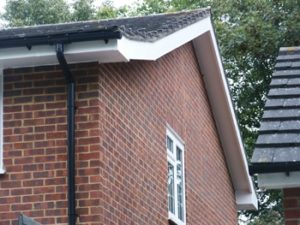Fascia Board Repair: A Comprehensive Guide
Fascia boards play an important function in the structural stability of a home. They are the long, straight boards that run along the lower edge of the roofing; they serve both functional and visual purposes. Over time, fascia boards can experience damage due to the components, bugs, or bad drainage systems. This post aims to provide an in-depth understanding of fascia board repair (https://git.True1ann.me), detailing essential info on recognizing damage, repair techniques, and maintenance ideas for house owners.

Comprehending Fascia Boards
Fascia boards are typically made from wood, vinyl, or aluminum. Their primary function is to support the bottom row of roofing shingles and conceal the rafters, thus providing a tidy and finished seek to the roofline. Moreover, fascia boards also play an important function in securing your home from water damage by helping to direct rainwater away from the house through seamless gutters.
Why Repair Fascia Boards?
Harmed fascia boards can cause a plethora of concerns, including:
- Water damage: Allowing wetness to penetrate the roof structure, leading to mold and structural decay.
- Bug invasions: Damage can offer entry points for bugs like squirrels or pests.
- Visual concerns: Cracked, distorted, or peeling fascia can interfere with a home's curb appeal.
Identifying Damage
Before continuing with repairs, it is essential to determine the condition of your fascia boards. Some typical signs of damage consist of:
- Rotting wood: Often arising from extended direct exposure to wetness.
- Peeling paint: Indicates wetness invasion or insufficient sealing.
- Fractures or splits: Can occur due to thermal expansion or extreme weather condition conditions.
- Drooping or removed boards: May be a sign of structural problems or insects.
Table 1: Common Fascia Board Damage Types
| Damage Type | Description | Trigger |
|---|
| Decaying | Soft, spongy texture | Extended moisture direct exposure |
| Peeling Paint | Flaking or blistering paint | Wetness seepage |
| Fractures | Visible fissures | Thermal growth |
| Sagging | Board is not lined up correctly | Structural damage |
| Insects | Holes or tunnels in the board | Entry by rodents/insects |
Fascia Board Repair Techniques
Fixing fascia boards involves numerous methods based on the type and extent of damage. Below are reliable strategies for fascia board repair.
1. Minor Damage: DIY Repair
For small damages, homeowners can frequently manage repairs with standard tools.
Products Needed:
- Wood filler or epoxy
- Paint or sealant
- Sandpaper
- Putty knife
- Primer (if repainting)
Steps:
- Assess Damage: Identify the degree of damage and identify if the whole board requires replacement or if repairs suffice.
- Tidy Area: Remove any debris or loose paint.
- Fill Gaps: Apply wood filler or epoxy to cracks or holes using a putty knife.
- Sand Smooth: Once dry, sand the fixed location to produce a smooth surface.
- Paint/Seal: Apply guide and paint to match the fascia.
2. Substantial Damage: Board Replacement
If a fascia board is significantly damaged, a total replacement may be required.
Products Needed:
- New fascia board (wood, vinyl, or aluminum)
- Nails or screws
- Hammer or drill
- Security safety glasses and gloves
- Guide and paint (if wooden)
Steps:
- Remove Damaged Board: Carefully take out the damaged fascia using a pry bar or saw, ensuring not to disturb surrounding products.
- Procedure and Cut: Measure the new board to the exact same length as the old one and cut accordingly.
- Attach New Board: Position the brand-new fascia board and protect it with nails or screws, guaranteeing it is flush against the roofline.
- End up: Paint or seal the new board to safeguard against wetness.
3. Professional Help
For extensive damage or property owner unpredictability, working with a professional contractor may be the very best alternative. A certified contractor can examine the situation precisely and guarantee that any repairs or replacements depend on market requirements.
Maintenance Tips for Fascia Boards
To extend the life of fascia boards and prevent future damage, consider the following maintenance pointers:
- Regular Inspection: Check fascia boards a minimum of when a year for indications of damage.
- Clean Gutters: Ensure gutters are regularly cleaned up to prevent water from pooling or overflowing onto fascia boards.
- Seal and Paint: Apply sealant or paint every couple of years to safeguard wooden fascia boards from moisture.
- Trim Overhanging Branches: Prevent physical damages from falling branches by keeping surrounding trees cut.
Frequently asked question Section
Q1: How often need to I check my fascia boards?A1: It is a good idea to
examine your fascia boards a minimum of when a year, particularly after heavy storms or seasonal modifications. Q2: Can I paint over peeling fascia?A2: Peeling
paint must be removed, the area needs to be sanded, and any underlying damage needs to be resolved before repainting. Q3: Is it necessary to change the whole fascia board if it's damaged?A3: Not always; minor damage can typically be repaired with filler, however comprehensive damage might warrant replacement. Q4:
What materials are the very best choices for fascia boards?A4: Wood is traditional and aesthetically pleasing; however, vinyl and aluminum are more resilientand resistant to rot and bugs. Fascia board repair is a necessary aspect of home maintenance that considerably impacts the total health of the roofing system and structure. By determining damage early, utilizing reliable repair methods, and sticking to maintenance suggestions, homeowners can safeguard their home from pricey repairs in the future. Whether going with DIY methods or looking for professional help, understanding the importance of fascia boards and their upkeep is vital for any house owner.